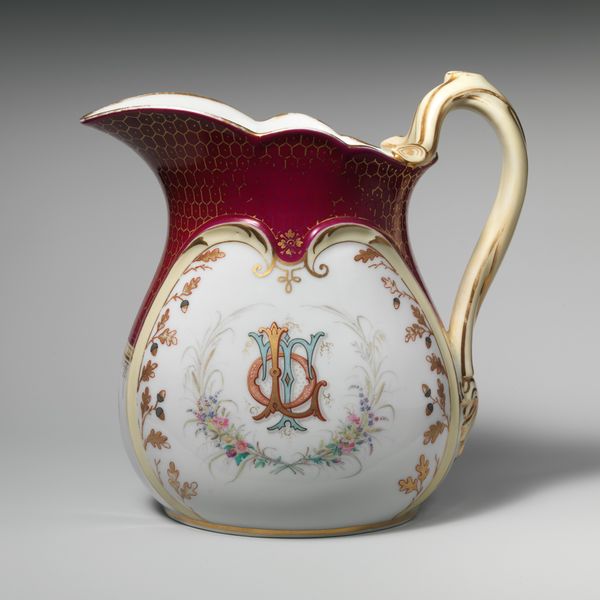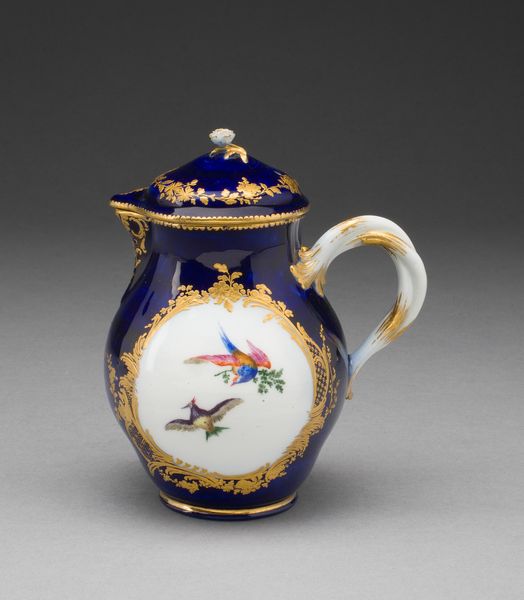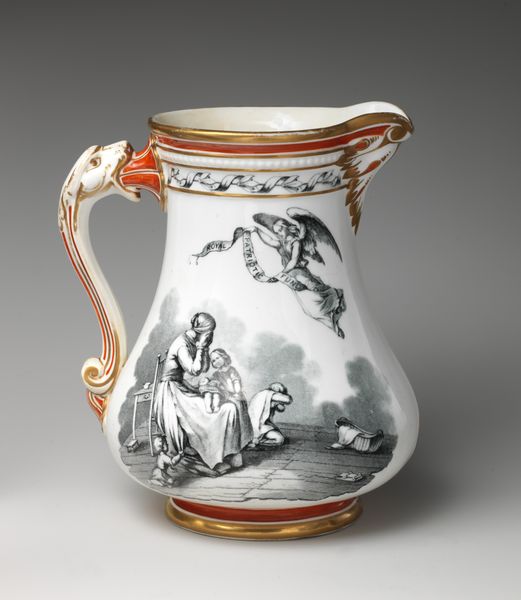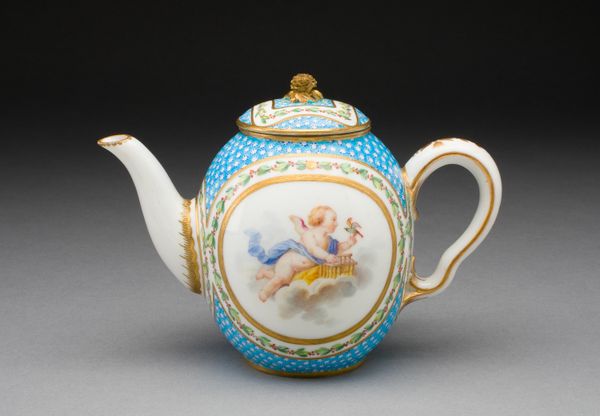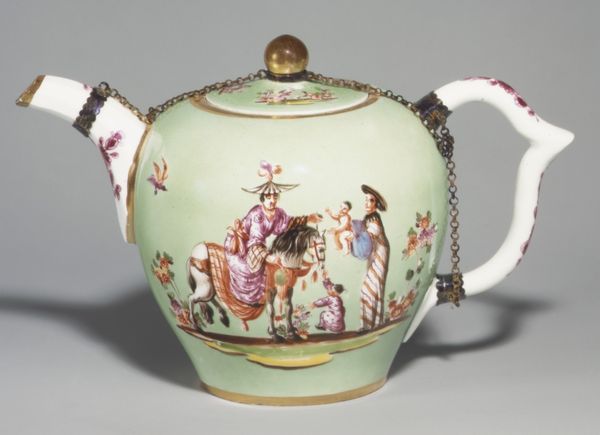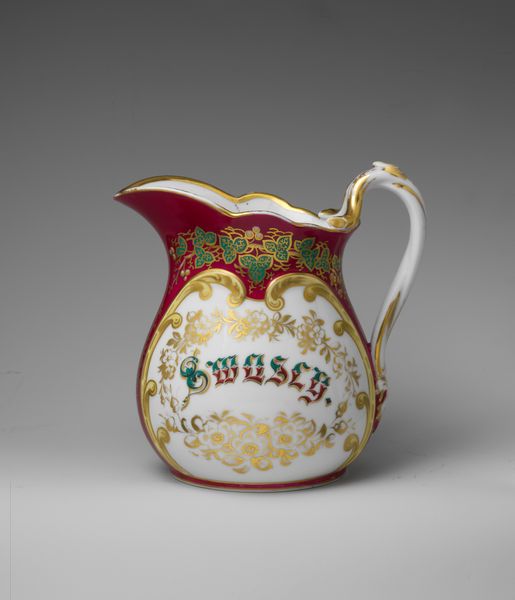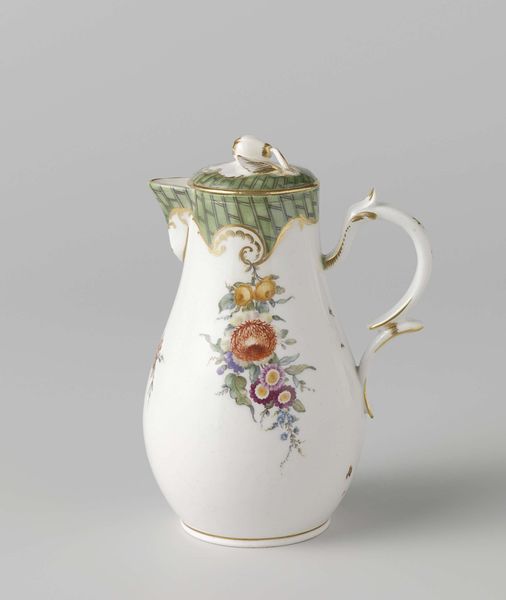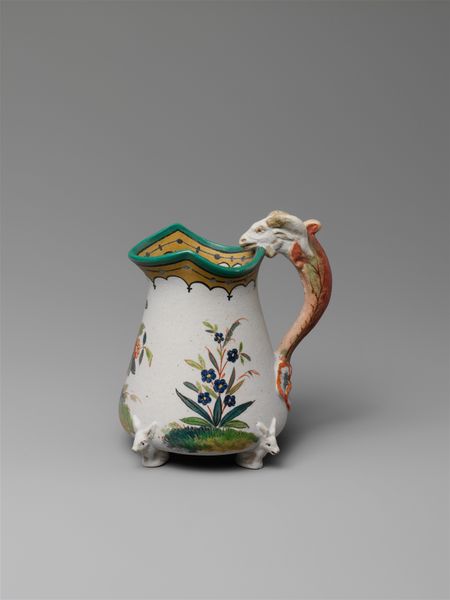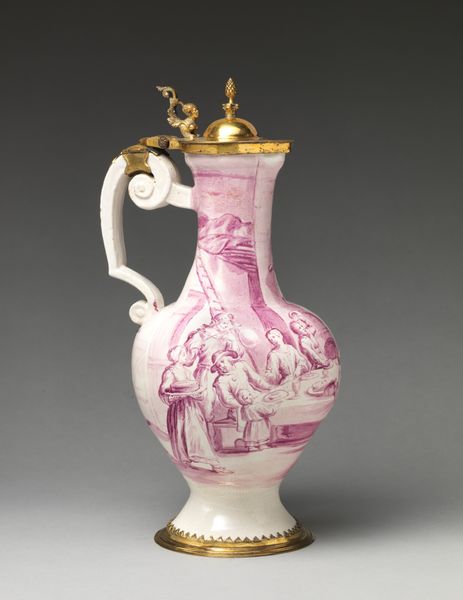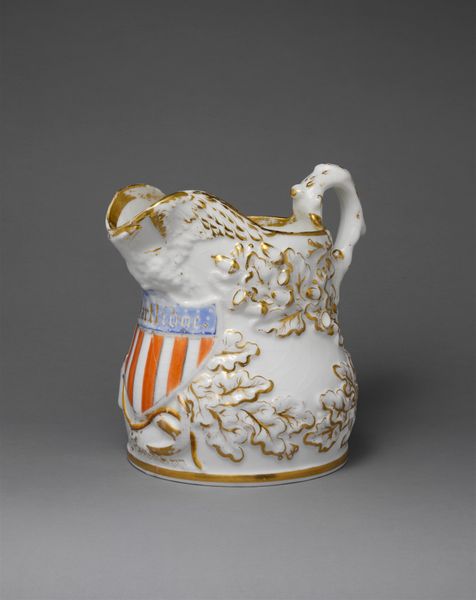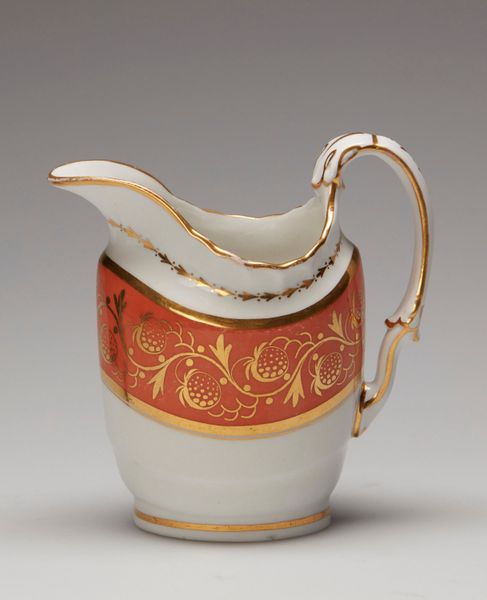
painting, porcelain
#
portrait
#
allegory
#
narrative-art
#
neoclassicism
#
painting
#
porcelain
#
figuration
#
watercolour illustration
#
history-painting
#
academic-art
Dimensions: 8 1/2 in. (21.6 cm)
Copyright: Public Domain
Curator: What a striking piece! Before us, we have an elegant porcelain pitcher, dating back to 1863. It’s credited to Rudolph T. Lux and currently resides here at The Metropolitan Museum of Art. It really speaks to its time. Editor: Yes, the delicacy of the porcelain is immediately captivating, but it's the imagery itself that pulls me in. It's imbued with an allegorical quality. What exactly am I seeing here? Curator: The central image portrays a classically inspired female figure, clearly meant to symbolize America herself. She's holding a flag, a very potent emblem, while bathed in this almost celestial glow. The star atop the flagpole also suggests high ideals. This dates to the height of the American Civil War. The image, then, must have resonated profoundly with its audience. Editor: The flag dominates, partially enveloping the figure. Flags in art are rarely just flags—they embody power, identity, and belonging. Here, it’s draped almost protectively around the woman, suggesting the fragility and preciousness of the nation during wartime. Curator: Absolutely. It served a deeply patriotic purpose during the war. Beyond that, remember the rise of industrialization, the mass production of goods, and burgeoning consumer culture during that period. It reminds me that these objects, even utilitarian ones like pitchers, became powerful vehicles for national ideology. Editor: Right. We're meant to *consume* the ideal of America as we pour our tea or water. Speaking of its reception, the idealized, Neoclassical style further enhances that sense of established authority and legitimacy. It’s a visual language of power. Curator: Yes, Neoclassicism was often utilized by those who commissioned portraits of important people, adding to that power dynamic. Consider this wasn’t merely decorative; this pitcher becomes a piece of political communication. Editor: The piece clearly merges nationalistic fervor with refined aesthetics. Considering our moment, it prompts me to ponder how symbols evolve—and whether those intended messages persist through time. Curator: Yes. These objects provide so much historical insight into what everyday citizens valued at the time. Editor: Thinking about this piece really allows for an appreciation of symbols and artifacts to create and reflect our shared identity and ideals.
Comments
No comments
Be the first to comment and join the conversation on the ultimate creative platform.
